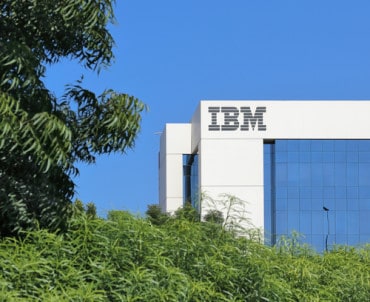
The banking and financial services industry has been moving toward an “omni-channel” presence in which the same customer services are seamlessly rendered, whether in person, online, over the phone, through social media or via mobile apps. RTInsights Industry Insights Editor Joe McKendrick explains how BMO Financial Group took this level of omni-channel interaction to the next level.
Company:
Industry:
Financial Services
Location:
North America
Business Opportunity or Challenge:
Banks and financial services firms have long been at the forefront of the transformation to a digital economy, both in terms of actual transaction delivery and customer service. The banking and financial services industry has been moving toward an omni-channel presence in which the same services and information are seamlessly rendered, whether through in-person branch visits, online Web visits, phone calls, social media interactions or, increasingly, mobile app engagements.
BMO Financial Group’s challenge was to take this level of omni-channel interaction to the next level. Their goal was to enable any employee, anywhere in the organization, to be able to respond to customers as they are interacting through one or more of the channels. “As digital marketing and social media have become more important, our customers are expecting us to know them in real-time,” said Gayle Ramsay, Vice President of Customer Analytics for BMO Financial Group. “We wanted the capability to serve them and provide relevant offers whether they interacted with us in a branch, through a call center or in digital space.”
How This Business Opportunity or Challenge was Met:
The challenge was to integrate customer and transaction information on the back end to ensure the data is available on a consistent basis, in real-time, across the enterprise. On the front end, the organization needed highly graphical interfaces that could pull the data in real-time into presentations that could be quickly accessed by employees. BMO Financial Group adopted a set of integration tools from TIBCO Software, Inc. to provide real-time information as well as an event processing engine from the vendor to identify key incidents as they happen. Additional tools were employed to simplify and automate processes.
The company also installed front-end client interfaces powered by TIBCO Spotfire for data visualizations and more efficient decision making on how to best serve customers. “The integration and the events capability allow us to have those relevant, timely conversations with our customers across channels,” explained Ramsay. “We have the ability to know, when the customer comes in, what they’ve done previously in another channel and leverage that to continue the conversation.”
The real-time integration, event processing, business process management (BPM) and front-end technologies enable the company to connect all customer channels to all products and services across all lines of business. “We use real-time event processing to trigger actions based on the right events so our response to customers is relevant,” said Lawrence Wan, Chief Architect for BMO Financial Group. “We now cut through large volumes of data and glean insights in a much more timely manner.”
Measurable/Quantifiable and “Soft” Benefits from This Initiative:
As a result of its real-time customer engagement technology, BMO Financial Group is seeing faster time to market (TTM) as well as drastically reduced integration costs. In addition, the company has been able to shorten approval times for commercial lending and mortgage approvals. “We consistently see 30 to 50 percent reductions in time to market for our business process automations and we’re able to reduce integration costs by 40 to 50 percent,” said Wan. “We now have robust, agile, highly scalable and continuously available integration and real-time event processing.”
BMO Financial Group’s combination of customer past history and real-time data and decision making has resulted in fast payback. “We can identify when a customer has done something significant and respond,” said Ramsay. “Payback from real-time, relevant offers was triple our investment costs.”
The event processing engine helps inform interactions even when initiated through a new channel. “By using real-time clickstream data, plus data on past behavior, we can see things like an abandoned product application,” said Ramsay. “We pick that up and it doesn’t just go back into the online channel, so we’re really understanding the whole picture. If that customer calls into a call center or walks into a branch, agents know what happened before. They can deal with the current situation and then move onto new areas in terms of a sale.”
By providing more relevant and timely offers, acceptance has improved. “Instead of offers that are months old, they are now recent and could be based on interactions that occurred just minutes before, so they’re very relevant for that customer,” said Ramsay. “We’ve seen positive acceptance triple from what it was four years ago. We’ve moved from a one-day response time to near real-time.”
Results also include better teller sales performance. “Our teller performance improved when we provided relevant, timely offers. We give tellers an easy way to understand the customer and present offers,” said Ramsay. “It lets them feel comfortable and now they make offers more often, basically going from only five percent of the time to now more than 60 percent of the time.”
Customer satisfaction and being proactive was a key goal for the bank. “In the past, we tended to be more reactive to customer needs,” explained Ramsay. “If they asked, we would provide it. But now we see that recent trends in our net promoter score (NPS) are trending up.”
Source: TIBCO Software, Inc.
EDITOR’S NOTE: To submit a case study on behalf of your company, please see our Submission Guidelines and Template for Case Studies.
Want more on this topic?
Research from Gartner: Real-Time Analytics with the Internet of Things
From the Center to the Edge: The IoT Decentralizes Computing
For Manufacturers, IoT Means the ‘Internet of Tools’
Becoming an ‘Always On’ Smart Business
Liked this article? Share it with your colleagues using the links below!




























